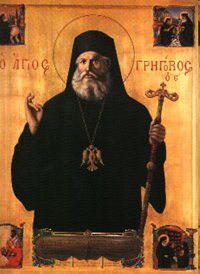
The PriestMartyr Gregory V, Patriarch of Constantinople, thrice occupied the cathedra-chair (1797-1799, 1806-1808, 1819-1821). During these times Greece found itself under the harsh Turkish yoke. many Greek patriots lived in the hope to again win national independence. They found active and authoritative support in a brave champion for freedom of their native land – in the holy Patriarch Gregory V. His connections with the Greek patriots came to light only when Alexander Ipsilanti with his army crossed over the River Prut against sultan Makhmul. One of the companions of the saint advised him to flee from Constantinople to Moreia. The saint answered him thus: "I sense, that the fishes of the Bosphorus will nibble at my body, but I shall die happy in the name of saving my nation".
On the day of Holy Pascha, 10 April 1821, they arrested the holy Patriarch and led him out of the doors of the Patriarchate, and then they threw his body into the sea.
Greek sailors noted the spot where the body of the saint was thrown, they found it, and on a ship of the Cephalonian captain Mark Sklabos under a Russian flag they sailed to Odessa. There, in the Greek church of the MostHoly Trinity, the body of the saint was buried on 19 June 1821. For dressing the remains of the priestmartyr, there was sent from Moscow vestments and a mitre with cross, which had belonged to His Holiness Patriarch Nikon (1652-1658).
In 1871 at the request of the Greek authorities it was decided to transfer the relics of Sainted Gregory from Odessa to Athens for the celebration of fifty years of Greek independence. In honour of the PriestMartyr Gregory, at Athens was compiled a special service. His deed contributed to the triumph of Christianity in the rebirth of Hellas.
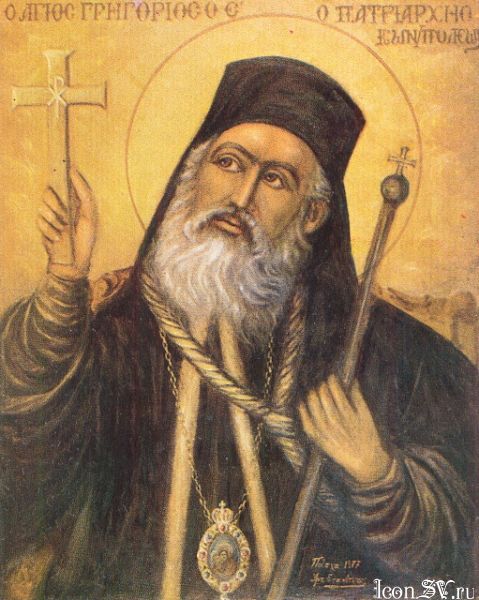
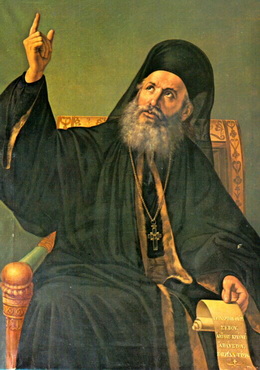
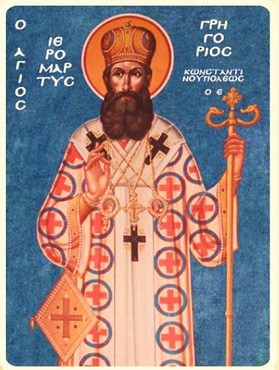
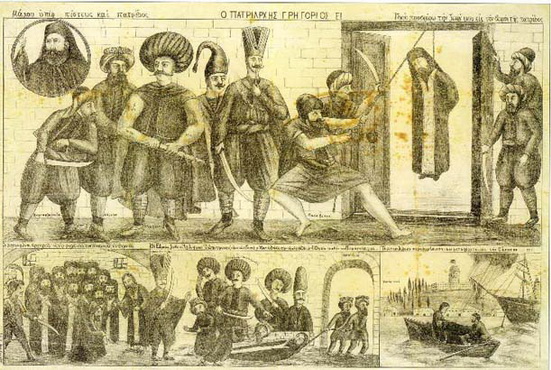
Back

 The PriestMartyr Gregory V, Patriarch of Constantinople, thrice occupied the cathedra-chair (1797-1799, 1806-1808, 1819-1821). During these times Greece found itself under the harsh Turkish yoke. many Greek patriots lived in the hope to again win national independence. They found active and authoritative support in a brave champion for freedom of their native land – in the holy Patriarch Gregory V. His connections with the Greek patriots came to light only when Alexander Ipsilanti with his army crossed over the River Prut against sultan Makhmul. One of the companions of the saint advised him to flee from Constantinople to Moreia. The saint answered him thus: "I sense, that the fishes of the Bosphorus will nibble at my body, but I shall die happy in the name of saving my nation".
The PriestMartyr Gregory V, Patriarch of Constantinople, thrice occupied the cathedra-chair (1797-1799, 1806-1808, 1819-1821). During these times Greece found itself under the harsh Turkish yoke. many Greek patriots lived in the hope to again win national independence. They found active and authoritative support in a brave champion for freedom of their native land – in the holy Patriarch Gregory V. His connections with the Greek patriots came to light only when Alexander Ipsilanti with his army crossed over the River Prut against sultan Makhmul. One of the companions of the saint advised him to flee from Constantinople to Moreia. The saint answered him thus: "I sense, that the fishes of the Bosphorus will nibble at my body, but I shall die happy in the name of saving my nation".


